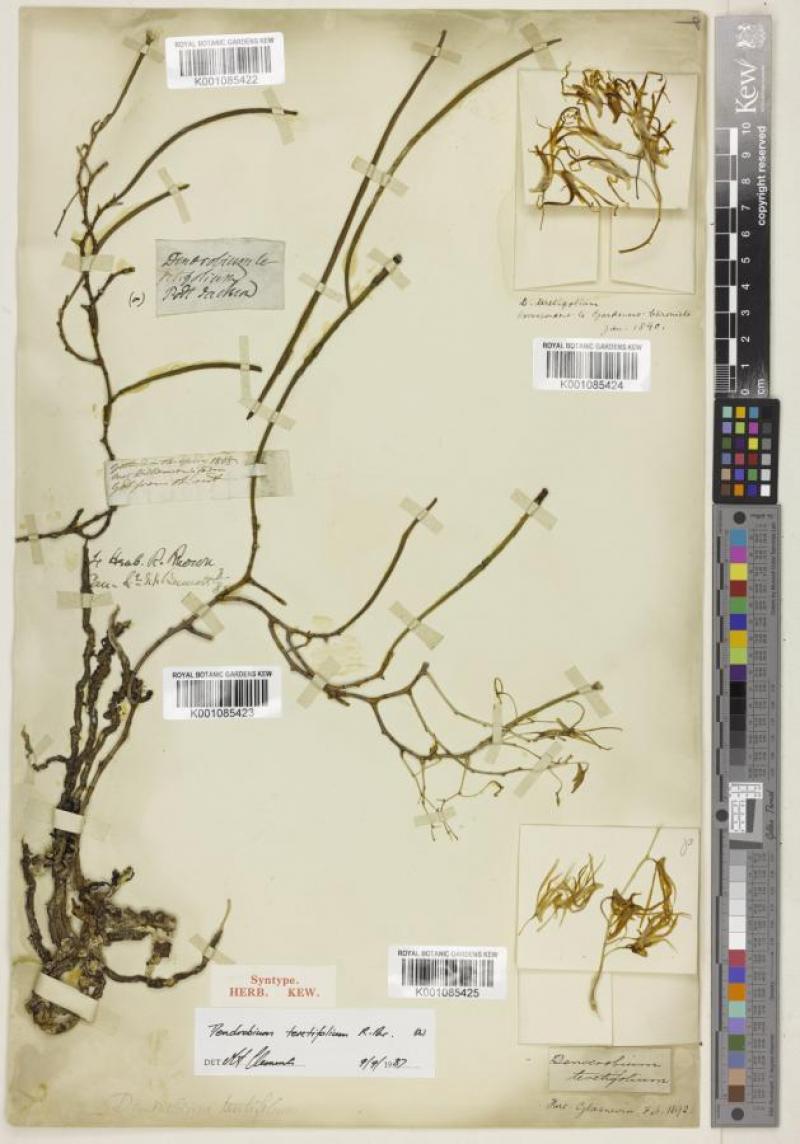Dendrobium teretifolium
Also known as: Rat Tail Orchid or Dockrillia teretifolia h.v. fasciculata Dendrobium teretifolium h.v. fairfaxii h.f. aureum Dockrillia sulphurea Dendrobium teretifolium var. fairfaxii Dendrobium teretifolium var. fasciculatum Dendrobium teretifolium h.v. teretifolium Dendrobium teretifolium var. aureum Dendrobium whewellii Dendrobium teretifolium var. album Dockrillia baseyana Callista fairfaxii Callista teretifolia Dendrobium baseyanum Dendrobium teretifolium f. fairfaxii Dendrobium teretifolium f. aureum Dendrobium dolichophyllum Dockrillia calamiformis Dockrillia fairfaxii Dockrillia dolichophylla Dockrillia teretifolia Dendrobium fairfaxii Pencil Orchid (Australia) Bridal Veil Orchid in the subfamily: Epidendroideae
General Information
Rat Tail Orchid is a sympodial orchid belonging to the sub family Epidendroideae.
Plant Description
Sympodial. Grows to 270cm. Each new growth has numerous terete shaped leaves that grow to 10-60cm long. Pseudobulbs grow to 270cm. The plant tends to climb or sprawl with each new growth and forms pendant or arching growths
Flowers
Numerous fragrant blossoms appear
Fragrance
The orchid is fragrant.
Fragrant:- IsFragrant
Climate
Grows at low elevations. Rainfall ranges from 48mm to 163mm per day, heaviest in July and lightest in February. Humidity ranges from 57% to 66%, highest in September and lowest in April. Temperature ranges from 9C to 29C, highest in June (21C to 29C) and lowest in January (9C to 20C).
Watering
These orchids prefer a constant supply of moisture, with a slight drying out between waterings. Saucers can be placed under pots to retain moisture during hot weather, however the saucers should be removed or let to dry every 1-2 weeks to prevent rot. Keep an eye on the plant especially in hot weather and look for cues of under/overwatering and adjust accordingly.
Fertiliser
Apply liquid based fertiliser per recommended directions. They can benefit from a high phosphate fertiliser leading up to flowering season, followed by a high nitrogen fertiliser when new growth appears, and a balanced fertiliser in other times. These orchids can also tolerate slow release fertiliser applied 1-2 pellets per cup (250ml) of media.
Apply fertiliser regularly at half strength year round. Use a high Nitrogen fertiliser during Spring and Summer. Use a high Phosphorous fertiliser during Summer. Reduce fertiliser when plant is dormant during Spring.


















